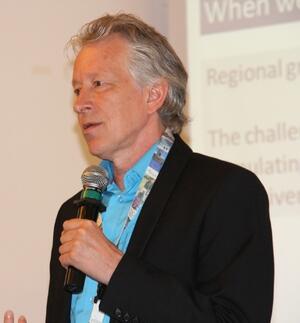ICN: Can you explain in a few sentences the “Attractivity Barometer”.
Knut Vareide: The Attractivity Barometer separates the effects of economic growth that results in growth in the number of jobs in a region, and the effects of attractiveness for settlement. These are the two driving forces behind population growth, and attractiveness for settlement has been overlooked in many places, especially small regions and municipalities.
ICN: What are the big benefits of that tool and where do you see its limits?
Knut Vareide: The benefit of analyzing attractiveness for settlement is that we can get more knowledge of how the attractiveness varies between regions, and that will give us more knowledge of what causes attractiveness, and that is necessary to develop strategies on how to improve attractiveness. We mainly use statistical analyses that limit the research to general findings. Statistical methods will not indentify a development that is unique to one place - that is the most important limit.
ICN: What were the most challenging tasks you had to deal with while working with the Trans in Form project?
Knut Vareide: It has been very challenging to dig into data for six different countries with limited resources. The regional structure is different for every country, and some countries have also had regional reforms that mess up the data. During the period we have also seen big changes, especially the financial crisis in 2009, and a sharp increase of migration between countries. Because of this, we had to revise our methods as we were going along.
ICN: What were the most surprising findings during your research work for the TiF project?
Knut Vareide: The sharp increase in migration between countries was a big surprise. One rarely sees such quick change in behavior in such a scale. Lithuania had a net emigration that equaled 2.3 percent of their entire population in 2010. I did not think that it was possible to see emigration in such a scale. Another surprising thing is that in countries with increased emigration such as Lithuania, the emigration was equally strong in the different regions inside Lithuania regardless of differences in economic development. Likewise, the immigration into a country with increased immigration, such as Norway, the immigration is surprisingly evenly divided between regions. Regions with poor economic development also had increased immigration. There were also some different patterns on attractiveness between Norway, Sweden and Germany, where cities were more attractive, and Poland, where cities were less attractive. We think this is temporary, and that cities in Poland also will be more attractive in the years to come. Also, we could not find any correlation between migration and growth in the number of jobs in the regions of Latvia and Lithuania. It is hard to believe that there is no positive correlation between those. I’m still wondering about this. To what extend was your work with the TiF project important for Telemark Research Institute? Knut Vareide: For us, to have experience on analyses of attractiveness in other countries is very useful. It is important for us to be more international in our research, and this was a great opportunity to get experience on analyzing data from other countries, to present our findings to an international audience, and to listen and learn from other perspectives from other countries.
ICN: What in your opinion are the three most important findings for rural areas in Northern Europe?
Knut Vareide: To avoid depopulation, it is equally important to focus on attractiveness for settlement as to work on job growth. The most important factors for attractiveness is stimulate house construction, to work for better communications to other places where people can commute, and to develop centers that meets the social need of the population. It is important to have a focus on these main factors, that are expensive and difficult to achieve, and that requires a long perspective, like 10 years or longer. There is no quick fix to attractiveness for settlement. Marketing on internet, cultural events, and other easy solutions can be a supplement, but will not be sufficient.
ICN: To what extend was being partner in Trans in Form worthwhile?
Knut Vareide: For my personal professional development as a researcher, being a partner in TiF has definitely been worthwhile. Economically, this project is a lot less profitable than others, as we only get refunded parts of our expenses. But I hope that the experience and professional development we have had will pay off, also economically, in the future.
ICN: What are the next tasks Telemark Research Institute will work with?
Knut Vareide: We continue to research on regional attractiveness. We just started to work on a new project for the Ministry of local government and regional development in Norway, where we will develop a new program theory on attractiveness. We won this project in an tender, where we competed with many other research institutes, and see this as a recognition on the work we have done so far. Maybe the fact that we also have been working in other countries plays a part when we were given the project?
Thank you Mr. Vareide and all the best for the future.
© Interview and pictures by Christin Schmidt

